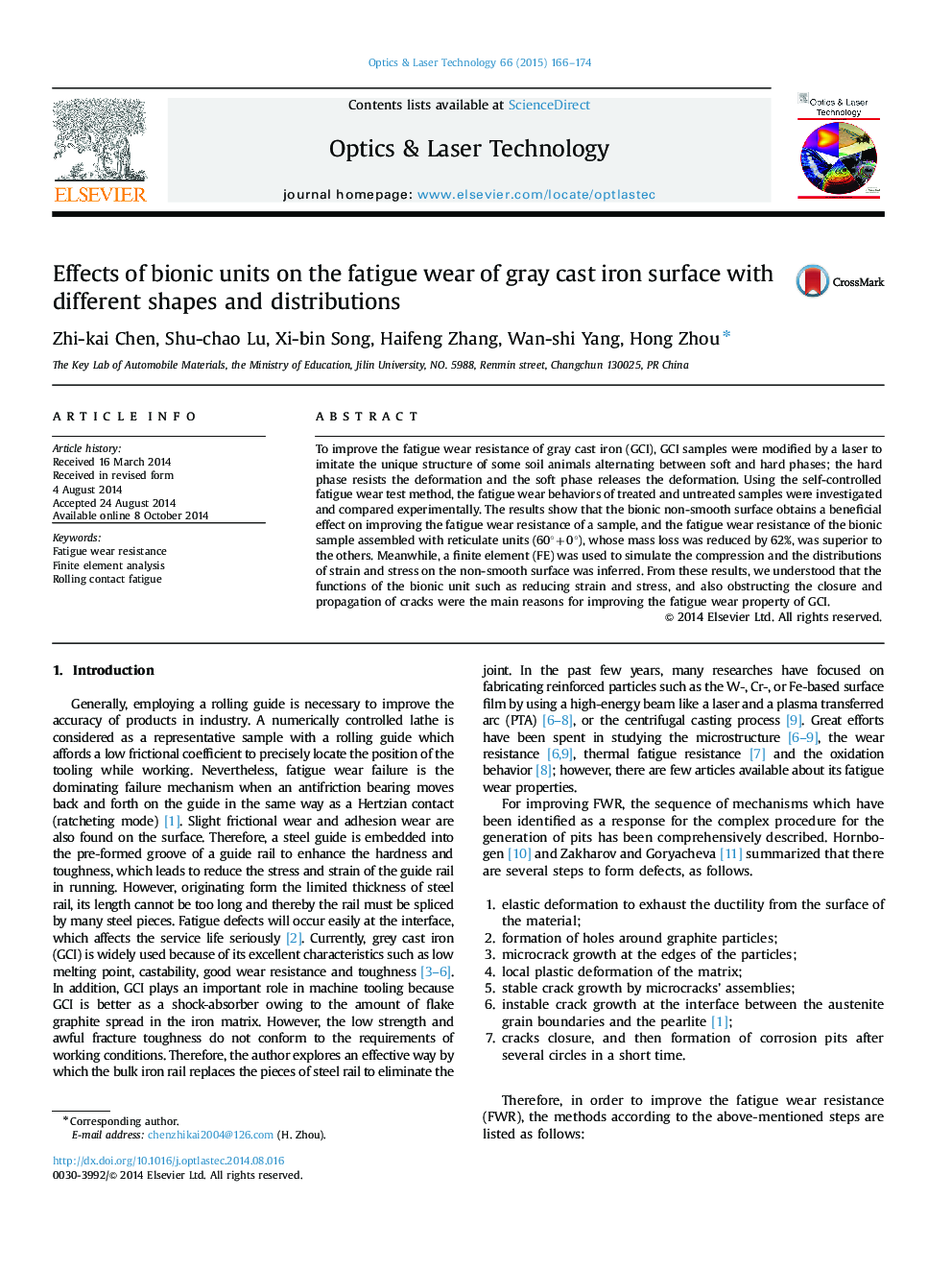| کد مقاله | کد نشریه | سال انتشار | مقاله انگلیسی | نسخه تمام متن |
|---|---|---|---|---|
| 733441 | 1461632 | 2015 | 9 صفحه PDF | دانلود رایگان |
• The fatigue wear resistance (FWR) was improved by local laser deposition.
• The behaviors of fatigue wear for original and bionic samples were investigated.
• The optimum combination of shape and distribution was found on FWR.
• Finite element analysis was used to indicate the distributions of stress in static.
• The mechanism of FWR for a bionic sample is discussed.
To improve the fatigue wear resistance of gray cast iron (GCI), GCI samples were modified by a laser to imitate the unique structure of some soil animals alternating between soft and hard phases; the hard phase resists the deformation and the soft phase releases the deformation. Using the self-controlled fatigue wear test method, the fatigue wear behaviors of treated and untreated samples were investigated and compared experimentally. The results show that the bionic non-smooth surface obtains a beneficial effect on improving the fatigue wear resistance of a sample, and the fatigue wear resistance of the bionic sample assembled with reticulate units (60°+0°), whose mass loss was reduced by 62%, was superior to the others. Meanwhile, a finite element (FE) was used to simulate the compression and the distributions of strain and stress on the non-smooth surface was inferred. From these results, we understood that the functions of the bionic unit such as reducing strain and stress, and also obstructing the closure and propagation of cracks were the main reasons for improving the fatigue wear property of GCI.
Journal: Optics & Laser Technology - Volume 66, March 2015, Pages 166–174
